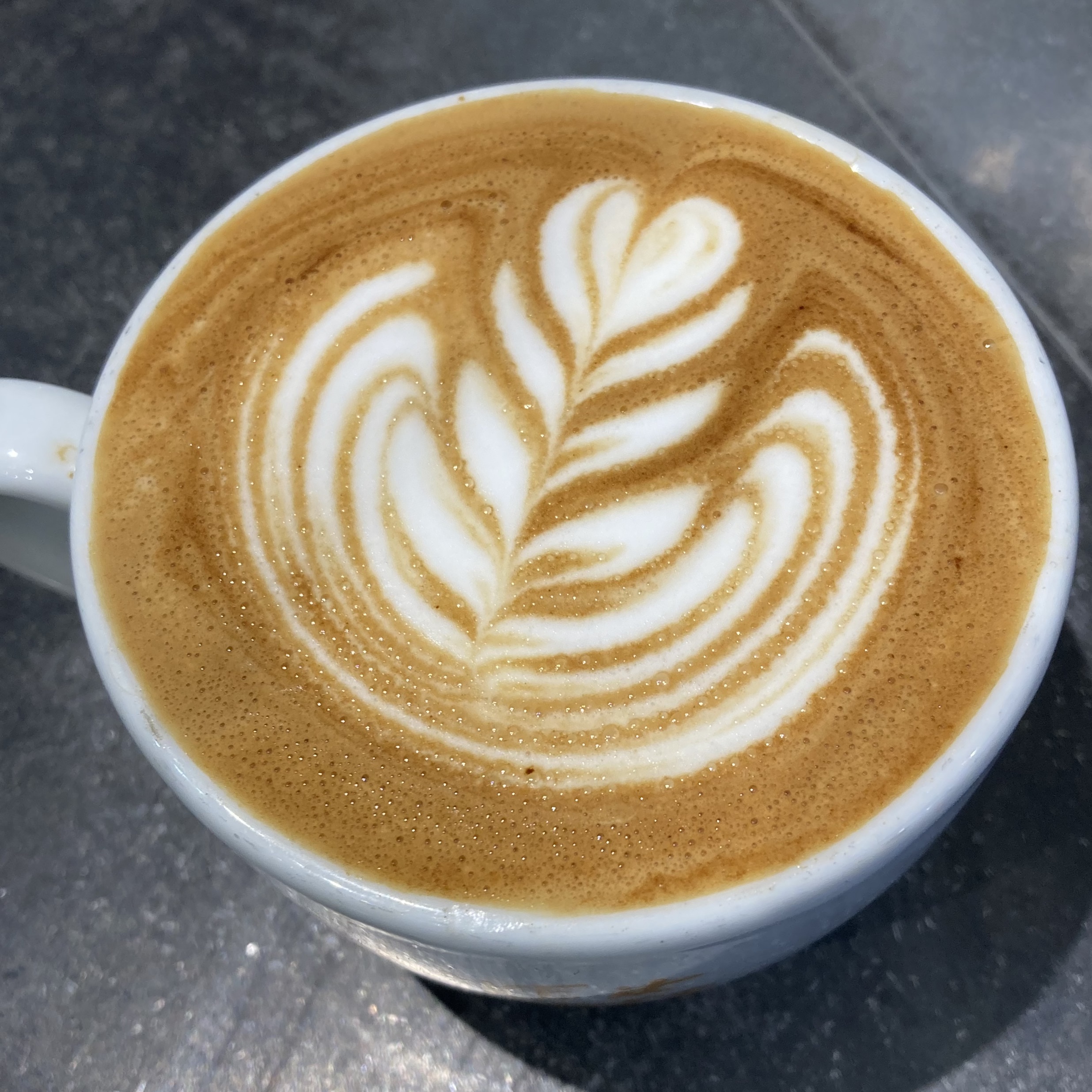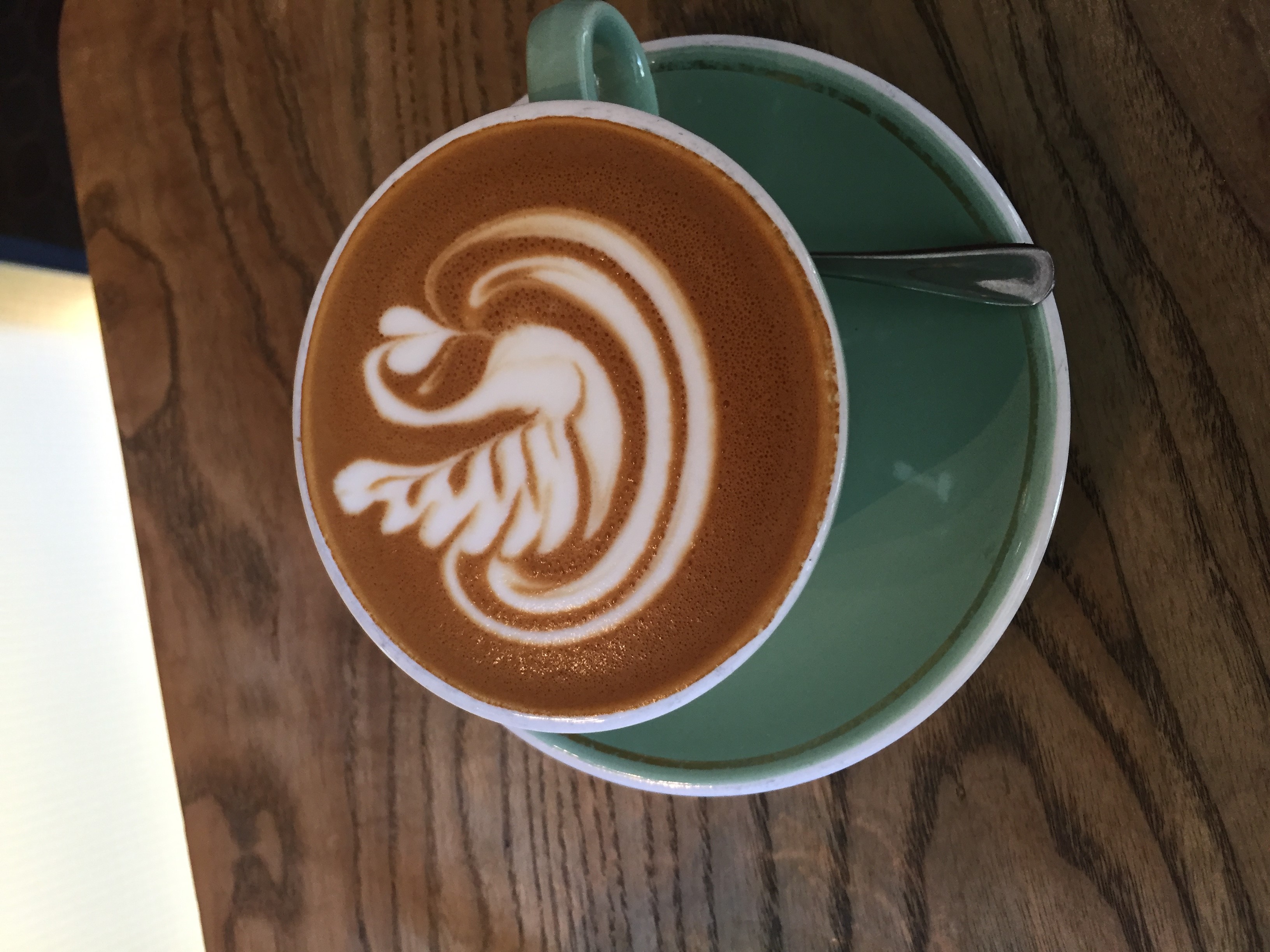Latte art on:
[Wikipedia]
[Google]
[Amazon]
Latte art is a method of preparing 
 Latte art developed independently in different countries, following the introduction of espresso and the development of microfoam, the combination of crema (which is an emulsion of coffee oil and brewed coffee) and microfoam allowing the pattern; it presumably was initially developed in Italy. David Schomer describes pitcher-shaking in latte art as "quite standard in the world of Italian espresso preparation", indicating that it was well established in Italy by this time.
In the United States, latte art was developed in Seattle in the 1980s and 1990s, and particularly popularized by David Schomer. Schomer credits the development of microfoam ("velvet foam" or "milk texturing") to Jack Kelly of ''Uptown espresso'' in 1986, and by 1989 the heart pattern was established and a signature at Schomer's '' Espresso Vivace.'' The rosette pattern was then developed by Schomer in 1992, recreating the technique based on a photograph he saw from Cafe Mateki in Italy. Schomer subsequently popularized latte art in his course "Caffe Latte Art".
Simultaneously, in Italy, Caffe Musetti's Luigi Lupi had a significant impact on the popularization of latte art through instructional videos. Lupi and Schomer collaborated on latte art to improve their technique after meeting online in the late 1990's. Lupi and his refined latte art rose to international recognition during the 2002 Barista World Championship, where he placed 4th.
Latte art developed independently in different countries, following the introduction of espresso and the development of microfoam, the combination of crema (which is an emulsion of coffee oil and brewed coffee) and microfoam allowing the pattern; it presumably was initially developed in Italy. David Schomer describes pitcher-shaking in latte art as "quite standard in the world of Italian espresso preparation", indicating that it was well established in Italy by this time.
In the United States, latte art was developed in Seattle in the 1980s and 1990s, and particularly popularized by David Schomer. Schomer credits the development of microfoam ("velvet foam" or "milk texturing") to Jack Kelly of ''Uptown espresso'' in 1986, and by 1989 the heart pattern was established and a signature at Schomer's '' Espresso Vivace.'' The rosette pattern was then developed by Schomer in 1992, recreating the technique based on a photograph he saw from Cafe Mateki in Italy. Schomer subsequently popularized latte art in his course "Caffe Latte Art".
Simultaneously, in Italy, Caffe Musetti's Luigi Lupi had a significant impact on the popularization of latte art through instructional videos. Lupi and Schomer collaborated on latte art to improve their technique after meeting online in the late 1990's. Lupi and his refined latte art rose to international recognition during the 2002 Barista World Championship, where he placed 4th.
 {{DEFAULTSORT:Latte Art
Contemporary art
Coffee culture
Articles containing video clips
{{DEFAULTSORT:Latte Art
Contemporary art
Coffee culture
Articles containing video clips
coffee
Coffee is a drink prepared from roasted coffee beans. Darkly colored, bitter, and slightly acidic, coffee has a stimulating effect on humans, primarily due to its caffeine content. It is the most popular hot drink in the world.
Seeds of ...
created by pouring microfoam into a shot of espresso
Espresso (, ) is a coffee-brewing method of Italian origin, in which a small amount of nearly boiling water (about ) is forced under of pressure through finely-ground coffee beans. Espresso can be made with a wide variety of coffee beans a ...
and resulting in a pattern or design on the surface of the latte
Caffè latte (), often shortened to just latte () in English, is a coffee beverage of Italian origin made with espresso and steamed milk. Variants include the chocolate-flavored mocha or replacing the coffee with another beverage base such as m ...
. It can also be created or embellished by simply "drawing" in the top layer of foam. Latte art is particularly difficult to create consistently, due to the demanding conditions required of both the espresso shot and milk. This, in turn, is limited by the experience of the barista
A barista (; ; from the Italian/Spanish for "bartender") is a person, usually a coffeehouse employee, who prepares and serves espresso-based coffee drinks.
Etymology and inflection
The word ''barista'' comes from Italian where it means a male ...
and quality of the espresso machine. The term also applies to other beverages containing milk foam, such as cappuccino
A cappuccino (; ; Italian plural: ''cappuccini'') is an espresso-based coffee drink that originated in Austria and was later popularized in Italy and is prepared with steamed milk foam ( microfoam).
Variations of the drink involve the use of ...
and hot chocolate.

History
 Latte art developed independently in different countries, following the introduction of espresso and the development of microfoam, the combination of crema (which is an emulsion of coffee oil and brewed coffee) and microfoam allowing the pattern; it presumably was initially developed in Italy. David Schomer describes pitcher-shaking in latte art as "quite standard in the world of Italian espresso preparation", indicating that it was well established in Italy by this time.
In the United States, latte art was developed in Seattle in the 1980s and 1990s, and particularly popularized by David Schomer. Schomer credits the development of microfoam ("velvet foam" or "milk texturing") to Jack Kelly of ''Uptown espresso'' in 1986, and by 1989 the heart pattern was established and a signature at Schomer's '' Espresso Vivace.'' The rosette pattern was then developed by Schomer in 1992, recreating the technique based on a photograph he saw from Cafe Mateki in Italy. Schomer subsequently popularized latte art in his course "Caffe Latte Art".
Simultaneously, in Italy, Caffe Musetti's Luigi Lupi had a significant impact on the popularization of latte art through instructional videos. Lupi and Schomer collaborated on latte art to improve their technique after meeting online in the late 1990's. Lupi and his refined latte art rose to international recognition during the 2002 Barista World Championship, where he placed 4th.
Latte art developed independently in different countries, following the introduction of espresso and the development of microfoam, the combination of crema (which is an emulsion of coffee oil and brewed coffee) and microfoam allowing the pattern; it presumably was initially developed in Italy. David Schomer describes pitcher-shaking in latte art as "quite standard in the world of Italian espresso preparation", indicating that it was well established in Italy by this time.
In the United States, latte art was developed in Seattle in the 1980s and 1990s, and particularly popularized by David Schomer. Schomer credits the development of microfoam ("velvet foam" or "milk texturing") to Jack Kelly of ''Uptown espresso'' in 1986, and by 1989 the heart pattern was established and a signature at Schomer's '' Espresso Vivace.'' The rosette pattern was then developed by Schomer in 1992, recreating the technique based on a photograph he saw from Cafe Mateki in Italy. Schomer subsequently popularized latte art in his course "Caffe Latte Art".
Simultaneously, in Italy, Caffe Musetti's Luigi Lupi had a significant impact on the popularization of latte art through instructional videos. Lupi and Schomer collaborated on latte art to improve their technique after meeting online in the late 1990's. Lupi and his refined latte art rose to international recognition during the 2002 Barista World Championship, where he placed 4th.
Chemistry
Latte art is a mixture of twocolloid
A colloid is a mixture in which one substance consisting of microscopically dispersed insoluble particles is suspended throughout another substance. Some definitions specify that the particles must be dispersed in a liquid, while others extend ...
s: the crema, which is an emulsion
An emulsion is a mixture of two or more liquids that are normally immiscible (unmixable or unblendable) owing to liquid-liquid phase separation. Emulsions are part of a more general class of two-phase systems of matter called colloids. Alth ...
of coffee oil and brewed coffee; and the microfoam, which is a foam of air in milk. Milk itself is an emulsion of butterfat in water, while coffee is a mixture
In chemistry, a mixture is a material made up of two or more different chemical substances which are not chemically bonded. A mixture is the physical combination of two or more substances in which the identities are retained and are mixed in the ...
of coffee solids in water. Neither of these colloids are stable
A stable is a building in which livestock, especially horses, are kept. It most commonly means a building that is divided into separate stalls for individual animals and livestock. There are many different types of stables in use today; the ...
– crema dissipates from espresso, while microfoam separates into drier foam and liquid milk – both degrading significantly in a matter of seconds, and thus latte art lasts only briefly.
Technique
Latte art requires first producing espresso with crema and microfoam, and then combining these to make latte art. See microfoam: procedure for how microfoam is made; this article concentrates on the latte art once the foam is made. Before the milk is added, the espresso shot must have a creamy brown surface, an emulsion known as crema. As the white foam from the milk rises to meet the red/brown surface of the shot, a contrast is created and the design emerges. As the milk is poured, the foam separates from the liquid and rises to the top. If the milk and espresso shot are "just right", and the pitcher is moved during the pour, the foam will rise to create a pattern on the surface. Alternatively, a pattern may be etched with a stick after the milk has been poured, rather than during the pour. Some controversy exists within the coffee community as to whether or not there is excessive focus on latte art amongst baristas. The argument is that too much focus on the superficial appearance of a drink leads some to ignore more important issues, such as taste. This is especially relevant with new baristas.Notes
References
 {{DEFAULTSORT:Latte Art
Contemporary art
Coffee culture
Articles containing video clips
{{DEFAULTSORT:Latte Art
Contemporary art
Coffee culture
Articles containing video clips